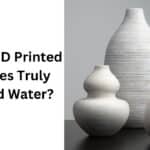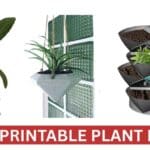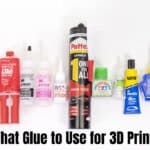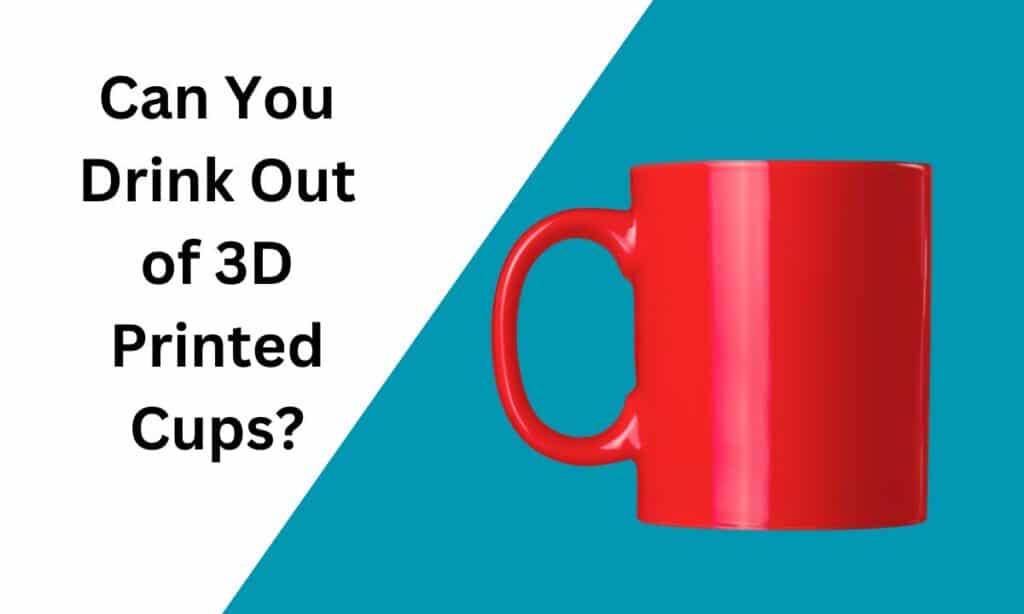
3D-printed cups can be safe for drinking, especially with PLA or PETG for cold beverages. Use food-safe coatings, avoid hot liquids, and clean regularly to ensure safety and enjoyment.
Affiliate Disclosure
We participate in Amazon affiliate programs, earning fees from qualifying purchases via links at no extra cost to you. It’s how we keep this blog rolling and my 3D printers buzzing with fresh filament for reviews like this one!
3D printing has revolutionized custom creation, allowing you to design and hold unique objects from your imagination. What could be more personal than drinking your morning coffee from a cup you designed and printed yourself? While the idea is exciting, the path to a truly food-safe 3D printed cup requires a few critical steps that go beyond just pressing “print.”
This isn’t to discourage you, but to empower you. It is absolutely possible to create a safe, durable, and watertight drinking vessel with a standard FDM printer. This complete guide will walk you through the entire process, from choosing the right materials to the essential sealing technique that makes your cup safe for everyday use.
Can You Drink Out of 3D Printed Cups?
3D printing technology, especially with standard FDM printers, wasn’t initially intended for food or drink use. While materials like PLA or PETG are often labeled “food-safe,” printing processes can introduce various contaminants, making food safety a more complex issue than it appears.
When it comes to 3D-printed drinkware, here are a few factors to consider:
- Material and Chemical Safety: Some 3D printing filaments are food-safe, but it’s important to ensure they don’t contain harmful additives or impurities. Brass nozzles, for example, may contain lead that could leach into the print.
- Bacterial Growth: The layered structure of 3D prints creates tiny crevices where bacteria can collect, making them hard to clean. Without a smooth surface finish, a 3D-printed cup can harbor microbes even after washing.
- Temperature Sensitivity: Many 3D printing materials, like PLA, lack high heat resistance, meaning they may deform or even leach chemicals when exposed to hot liquids.
What Materials Are Safe for Drinking?
Certain 3D printing materials are safer than others when it comes to making drinkware. Here are some commonly used materials and their respective safety levels:
- PLA (Polylactic Acid): PLA is a plant-based filament that’s often considered food-safe in its pure form. However, it’s generally not suitable for hot beverages since it can soften at relatively low temperatures. PLA’s safety also relies on proper processing and a food-grade coating to smooth out the surface layers.
- PETG (Polyethylene Terephthalate Glycol): PETG is often touted as a food-safe filament and has better temperature resistance than PLA, making it suitable for warm liquids. However, PETG printed layers may still leave small crevices that can trap bacteria, and contamination from additives in colored PETG is a potential concern.
- Special Food-Safe Resins: For SLA printing, specific food-safe resins can be used, but they require precise curing to be safe. Standard SLA resins are generally not safe for drinkware.
What Materials Are Unsafe for Drinking?
While certain materials can be safe with proper handling, others should be avoided altogether. Here are some common filaments that are not food-safe:
- ABS (Acrylonitrile Butadiene Styrene): ABS is durable and popular for printing, but it’s not safe for food use. ABS can leach toxic substances, especially when heated, and emits fumes during the printing process. Avoid using ABS for drinkware.
- Nylon: Though strong, nylon is porous, which makes it difficult to sanitize properly. Its texture can harbor bacteria and mold, making it unsuitable for drinkware.
- Standard SLA Resins: Most standard SLA resins are toxic before curing, and even after curing, they can break down when exposed to liquids. If using SLA, only specific food-safe resins are suitable for drinkware, and these still require extensive finishing.
- Flexible Filaments: Flexible filaments like TPU and TPE are generally not food-safe. They can contain additives and chemicals that may leach into beverages.
The Ultimate Guide to Making a Food-Safe 3D Printed Cup
Follow these steps in order to create a cup that is both beautiful and safe.
Step 1: Choose the Right Food-Safe Filament
Your material choice is the foundation. Look for filaments that are certified food-safe by the FDA or its equivalent.
| Material | Heat Resistance | Food Safe | Use Cases |
|---|---|---|---|
| PLA | 50°C (120°F) | Yes, in pure form | Cold drinks, novelty use. Biodegradable. |
| PETG | 70°C (160°F) | Yes, often FDA-approved | Sodas, warm (not hot) drinks. More durable. |
| PP (Polypropylene) | 100°C (212°F) | Yes, FDA-approved | The best choice for heat resistance. Harder to print. |
Pro Tip: Always buy from reputable manufacturers and choose filaments labeled “food-grade” or that provide material safety data sheets (MSDS).
Step 2: Prepare Your Printer for Food Safety
The filament isn’t the only source of contamination.
- Use a Stainless Steel Nozzle: Standard brass nozzles contain lead, which can be deposited in your prints. A hardened or stainless steel nozzle is essential for food-safe printing.
- Dedicate a Filament: Use a separate, new spool of filament only for food-related projects to avoid cross-contamination from previous prints.
Step 3: Apply a Food-Safe Coating (The Most Important Step)
This step solves the #1 problem: bacterial growth in the layer lines. A coating creates a smooth, non-porous, glass-like barrier.
- Recommended Product: Use a 2-part epoxy resin that is explicitly labeled “Food-Safe” or “Food-Contact Safe” after full cure. Popular brands among makers include ArtResin and TotalBoat Table Top Epoxy.
- How to Apply:
- Ensure your printed cup is clean and free of dust.
- Mix the epoxy resin according to the manufacturer’s instructions exactly.
- Apply a thin, even coat to the inside of the cup, which is the most critical surface. You can also coat the outside for a uniform look.
- Let it cure completely for the recommended time (usually 24-72 hours) before use.
Practical Challenges in Making 3D Prints Watertight and Foodsafe
One of the primary challenges in using 3D-printed drinkware is achieving a truly watertight surface. It’s also just hard to make 3D printed things that are fully watertight, at least with your standard FDM equipment. If coated in sealant, that becomes a different story, but off the bed, no, they’re nowhere near food-safe. This point highlights that standard FDM printers, which lay down plastic layer by layer, often leave small gaps between layers, which makes the printed item prone to leaking.
For instance, PETG is food safe but the printer leaves small crevices between layers, those favor the formation of fungus and other microbes as it’s difficult to clean. These crevices make it almost impossible to sanitize the surface properly, which can lead to health risks.
There are additional considerations related to the 3D printing process itself. The porosity is definitely one part of the problem in making food-safe prints, but if that were the only problem, prints would be more or less food-safe for a single use. The process can introduce contamination, such as tiny particles from the extrusion path, detritus from the filament, or even residues from adhesives used on the print bed. All these factors create potential health risks, especially for regular, long-term use.
Why You May Need Food-Safe Coatings
Given the limitations of most 3D printing materials and processes, applying a food-safe coating can help mitigate some of the health risks:
- Food-Safe Epoxy Resin: An epoxy coating creates a smooth, non-porous barrier, which helps make the cup easier to clean and prevents bacterial growth. Many hobbyists apply this solution, making their 3D-printed drinkware safe for casual use.
- Clear Casting Resin: For those concerned with lead exposure, a clear casting resin can provide additional protection. Go to the craft store, pick up a box of ‘Amazing Clear Casting Resin,’ coat your model with it… 24 hours later, your cup will be fully cured, ready for a good washing, and will now be food-safe and watertight.” This tip from experienced users highlights how adding a coating can turn a 3D print into a safer option.
Should You Use 3D Printed Cups for Drinking?
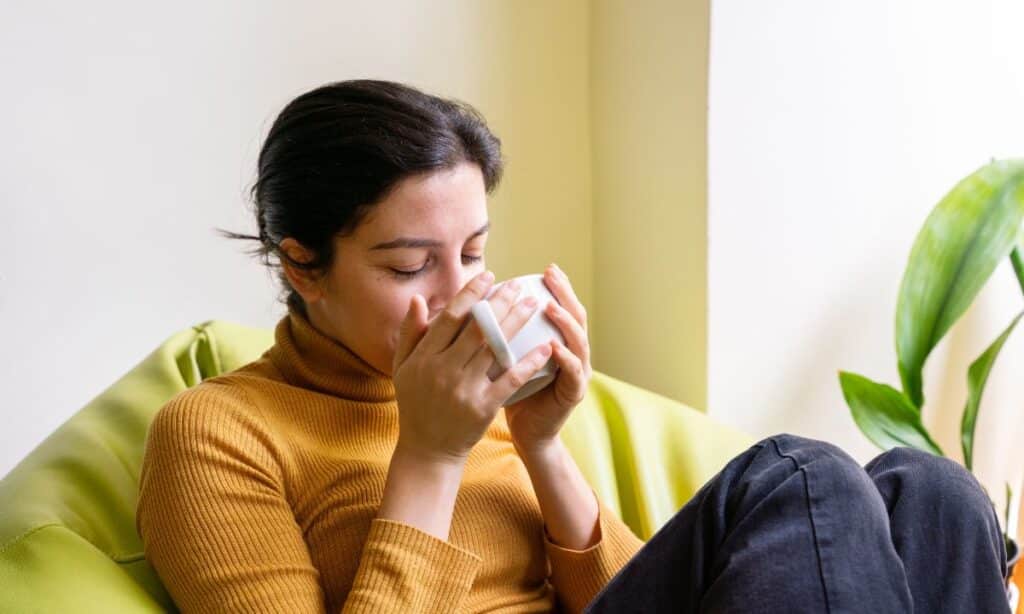
If you’re considering a 3D-printed cup, the consensus is that “you could, but at your own risk.” For one-time use or novelty, a 3D-printed cup may be safe, but daily use could expose you or others to contaminants. The risks increase without thorough finishing, so adding a food-safe coating is recommended for anyone planning to use these cups frequently.
Should I Be Concerned About Bacteria in 3D Printed Cups?
An important consideration when using a 3D-printed cup is its potential for harboring bacteria. The layered structure of 3D printing means there are small spaces between layers where bacteria can grow, especially if the surface isn’t sealed.
To minimize bacterial risk, smooth out the surface as much as possible and use a food-safe coating to seal the layers. Regular and thorough cleaning is essential, and avoid leaving liquid in the cup for long periods, as this can promote bacterial growth.
Is It Safe to Drink Hot Liquids from 3D Printed Cups?
Most 3D printing materials, especially PLA, are not ideal for hot liquids. Materials like PETG may hold up better under heat, but even then, they aren’t typically meant for boiling temperatures. For hot drinks like coffee or tea, traditional ceramic or stainless steel cups are generally a safer choice.
For those set on drinking hot liquids from a 3D-printed cup, consider using high-temperature resistant materials like certain grades of nylon. However, these materials are less common and may require more advanced 3D printing setups.
Benefits of 3D Printed Cups
Despite some safety considerations, 3D-printed cups can offer unique advantages:
- Customization: 3D printing allows for endless customization, so you can create cups that are tailored to specific designs, shapes, and sizes.
- Accessibility: For hobbyists, creating a cup at home is easy and affordable with the right materials.
- Eco-Friendly Options: PLA, a commonly used 3D printing material, is biodegradable and can be an eco-friendly option if sourced sustainably.
Conclusion
3D printing opens up many possibilities, including creating custom, unique cups. While 3D-printed cups can be safe for drinking under the right conditions, the material and the printing process significantly impact the cup’s suitability for drinking, especially with hot beverages. PLA and PETG are among the safer materials for 3D printing cups, particularly for cold beverages. For anyone interested in using a 3D-printed cup, taking extra steps—such as using a food-safe coating, avoiding hot liquids, and ensuring regular cleaning—can help keep drinking safe and enjoyable.
As with any food-related item, if you have concerns about using 3D-printed cups, consult a professional, especially if the cup is intended for daily use or hot beverages. With proper care and attention, a 3D-printed cup can be a fun and functional choice for cold drinks!
Frequently Asked Questions (FAQs)
Are all 3D-printed cups safe to drink from?
No, only cups made from food-safe materials and coated to prevent bacterial growth are generally safe for drinking.
Can I drink hot liquids from a 3D-printed cup?
It’s best to avoid hot liquids in 3D-printed cups unless they’re made from high-temperature resistant, food-safe materials.
What materials are food-safe for 3D-printed cups?
PLA and PETG are commonly used food-safe materials for cold drinks, but using a food-safe coating is recommended.
How do I clean a 3D-printed cup?
Hand-washing with soap and warm water is recommended, paying extra attention to crevices and layers.
Can bacteria grow in 3D-printed cups?
Yes, due to the layered texture, bacteria can accumulate. Using a food-safe coating and cleaning thoroughly helps reduce this risk.

